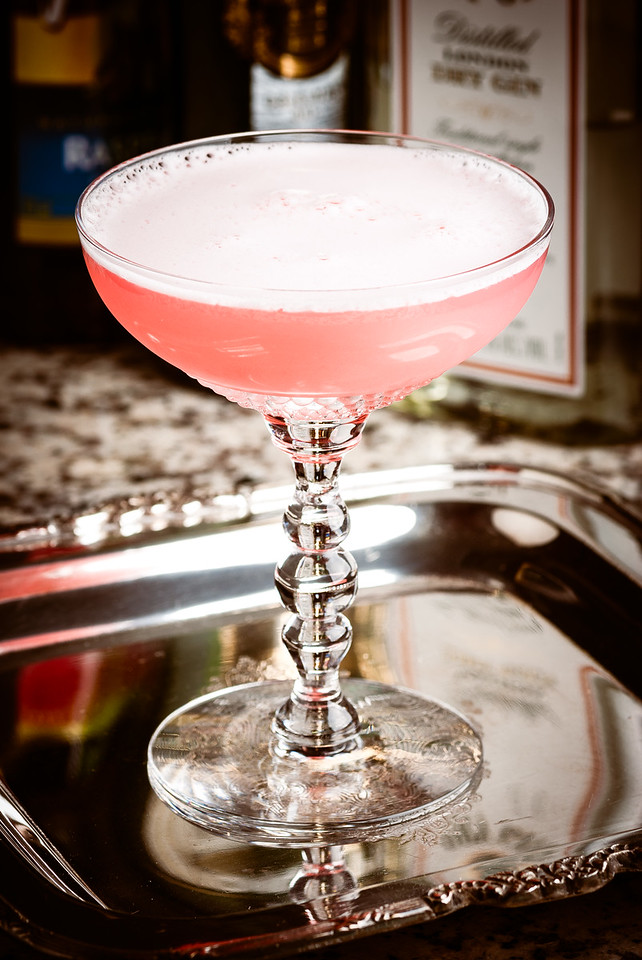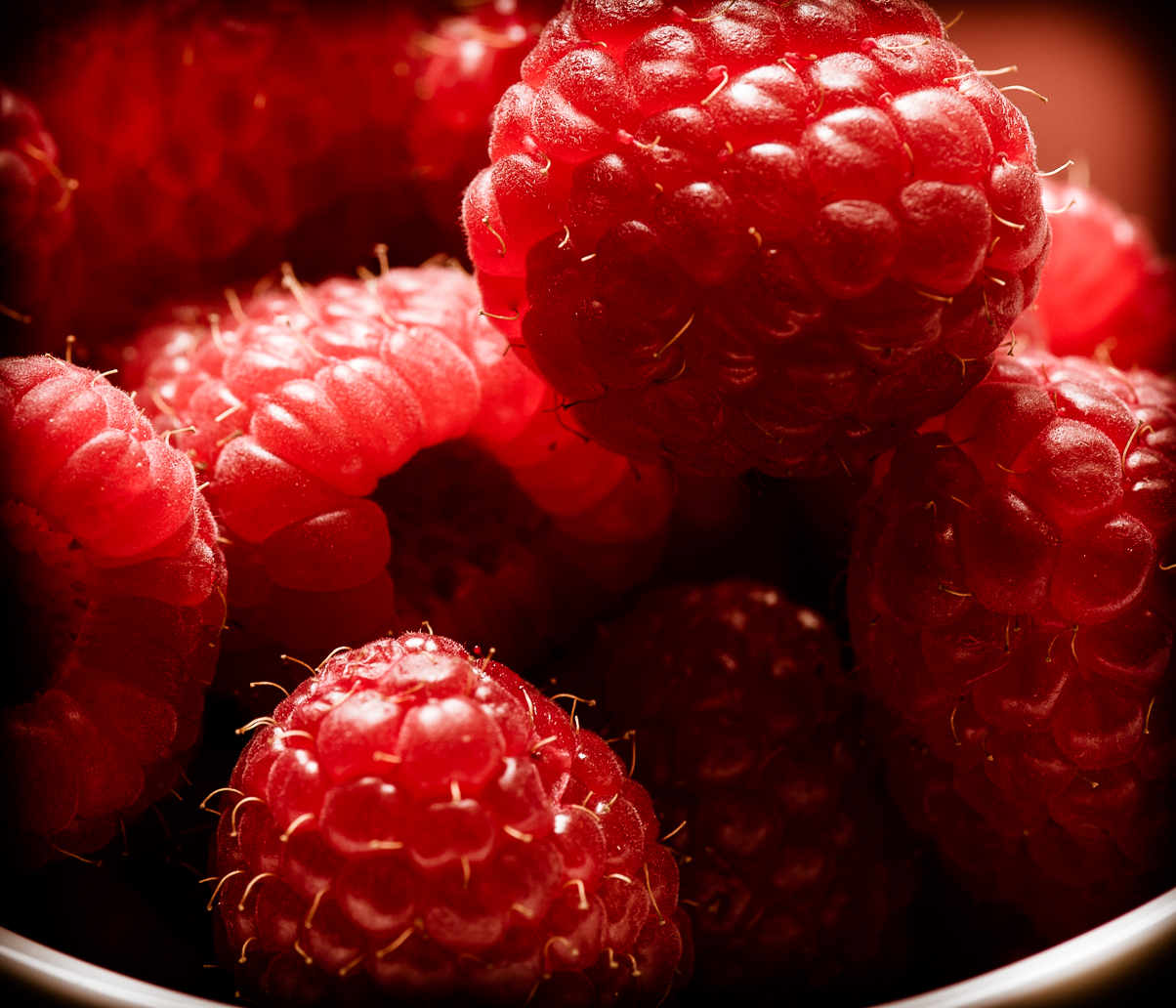The Pendennis Club, the Jockey Club, the Royal Bermuda Yacht Club, the Turf Club, the Pegu Club—any number of Old Boys Clubs have celebrated themselves with eponymous cocktails. For most, only the namesake drinks survive, and many of those are barely alive.
Such is the case with Philadelphia’s Clover Club, a collection of lawyers, bankers, journalists and other professionals who gathered in the Bellevue-Stratford Hotel in the early 1880s, and continued on until WWI. This was not a debating society or charitable organization; these guys were getting together to laugh and scratch, to eat, drink, and roast their celebrity guests. And to eat. And to drink. (As A. S. Crockett described the club in his Old Waldorf-Astoria Bar Book, the Clover Club “often dined and wined, and wined again.”)
So the invention of the Clover Club Cocktail is hardly a surprise. The drink seems to have appeared during the first decade of the twentieth century (what took them so long?), and was popular well beyond the club’s environs for ten years or so—“a wide but short-lived popularity,” as Crockett puts it.
The drink’s earliest appearance in print seems to be in Paul Lowe’s 1909 Drinks — How to Mix and Serve. According to Difford’s Guide, the original Clover Club Cocktail called for an ounce each of dry gin, dry vermouth, lemon juice, and raspberry syrup, shaken with half an egg white to froth it up and blend the flavors.
The Clover Club mutated rapidly as its popularity leaped from city to city, and barroom to barroom. Some bartenders substituted sweet vermouth, some mixed both sweet and dry; some insisted on lime juice instead of lemon; some even substituted grenadine for raspberry. Nearly all tinkered with the proportions.

But the most important variant—perhaps corruption is the better word—had no vermouth at all; typically gin-heavy, and often made with grenadine, this vermouth-free gin sour became the modern model for the Clover Club Cocktail.
It is no wonder, given this stripped-down model, that the Clover Club faded from popularity. The vermouth-free version is simply hollow—as Gertrude Stein so famously said in another context, “there is no there there.” Without the vermouth, Clover Club is merely a collection of unrelated flavors; vermouth ties the drink together; it becomes rich, unified, and complex, a cocktail that is greater than the sum of its parts. For the life of me, I can’t imagine what led bartenders to strip either vermouth or raspberry from the recipe.
The Clover Club Cocktail
- 1½ oz London Dry Gin (Bombay Dry)
- ¾ oz Dry Vermouth (Noilly Pratt Original Dry)
- ¾ oz freshly squeezed lemon juice
- ¼ oz raspberry syrup (Torani)
- ½ fresh egg white
Dry-shake all ingredients for about 10 seconds (or so); add ice and shake about 30 seconds more, until well frothed and very cold. Double strain into a well-chilled cocktail glass.
The dominant flavor in the Clover Club is the raspberry; it requires a light hand, as it can overrun the other flavors very easily. (That full ounce of raspberry syrup in the original recipe seems like madness—very sweet, overpoweringly raspberry.) There are many decent raspberry syrups on the market; I use Torani, which is at least made with cane sugar and is readily available. The quarter-ounce is a guideline—you’ll need to tune the recipe to the sweetness and “raspberryness” of your chosen syrup.
I have also made the Clover Club with raspberry preserves, and it works quite nicely if you don’t have ready access to the syrup. Again, you’ll want to experiment with proportions; one or two barspoons of preserves should be a reasonable starting point. (Don’t forget to double strain.)
The best alternative of all is fresh raspberries. Muddle half a dozen berries, add sugar to taste, double strain.
(Many recipe listings suggest grenadine instead of raspberry. Grenadine makes a very different drink—raspberries and pomegranates do not taste at all alike.)
As for the gin, Clover Club works well with a good, juniper-backboned London Dry; other styles seem to get buried under the raspberry and lemon.
The Clover Club is typically ungarnished, but if you’re making the drink with fresh berries, a raspberry garnish is the obvious thing—if you got it, flaunt it. And the addition of a sprig of mint to the presentation makes a quick transformation into the Clover Leaf Cocktail.
“The Clover Club Cocktail” at cold-glass.com : All text and photos © 2013 Douglas M. Ford. All rights reserved.

love cocktails like this with the glorious color. I wonder how a rasberry shrub would work in it.
Interesting idea. One way to find out…
I’m glad you enjoy Cold Glass, thanks!
Excellent video demonstration of double-straining here: http://www.hitthehighbeam.com/2011/05/04/how-to-double-strain-your-cocktail/
For folks (like me) who weren’t sure how to do it.
Thanks, Raphael, 39 seconds well spent.
I’m slowly making my way through your index of cocktails, and this was another great one (albeit, a little more work as I had to muddle my own raspberry syrup). I also experimented with substituting Chambord for the raspberry syrup. It made an entirely different tasting drink, but it was also good. Thank you for making these blog entries!
Thanks, and congratulations on muddling your own syrup, that’s excellent!
Hey, back to making drinks for my beer-loving bar. This week we’ve decided to make Clover Clubs on Friday, after the resounding success of the Future Ghost last week and a strong start to our “featured cocktail” night the week before (a slightly modified Oriental Cocktail, also taken from this site). The liquor bottle we’re trying to 86 this week is Rogue’s Pink Spruce Gin, which is a very dry, spicy gin with very little juniper presence. Once again, having a head chef to work with makes things immensely easier and more fun. In preparation for this drink, I steered him toward a recipe for raspberry syrup, but he surprised me by instead making a raspberry coulis with black pepper, and we spent an evening experimenting. In order to keep the richness of a dessert drink, we eventually increased it to a full ounce of the coulis, and our Clover Club is wonderful with fresh lemon and Dolin Dry. I weedled my chef into prepping up to-go ramekins of egg white to ease the strain on our bartenders, whose first instinct is to whine about drinks that require more preparation than pouring beer into a glass, and now we’re set for Friday.
Thanks for posting this recipe. I actually originally stumbled upon this blog while trying to find a Clover Club that worked. I got excited about a good raspberry cocktail after seeing a gorgeous picture on kitchn, but their recipe (vermouth-less) tasted jumbled and unremarkable. I didn’t want the pint of raspberries I’d boiled and strained and steeped and mixed into a syrup to go to waste, so I searched the internet until I found your site. After being lost in the rum section for hours (I’m a tiki-lover first), I tried this version with some Bombay Sapphire, and it was excellent. I still prefer that gin in my Clover Club; its more complex and delicate flavors are perfect with the balance of lemon and raspberry. To my palate, Tanqueray is too aloof and unmixed into the dessert nature of the drink, whereas my other standard, Beefeater 24, is far too sweet.
Anyway, I’m rambling now. Still loving the blog. My head chef loves Hendrick’s gin, by the way, any specific ideas for that? I only like it’s vegetal cucumber flavor in a cucumber garnished Hendrick’s and Tonic (though that is my standard order in a strange bar).
Raspberry coulis with black pepper—that sounds like a brilliant experiment, I wish I could be there to try it.
And I’ve never tried a Clover Club with Sapphire, I’ll have to do that one day.
As for Hendrick’s: I agree that it seems to work great with tonic. I’ve also had luck with a Hendrick’s Negroni, though some people might suggest that’s crazy.
It’s gratifying that you find Cold Glass useful, thanks for letting me know, and keep up the good work!
Hi Doug
Another report from Hong Kong as we head into the humid swelter of summer and a Clover Club starys to feel attractively refreshing.
I’ve recently discovered the ultimate luxury garnish for this cocktail: a light dusting of freshly grated tonka bean. The heady scent of the tonka as you sip is a great harmony with the raspberry.
Cheers
Hello again, Philip. So tonka bean, I think I’ve never tasted that. A heady scent in harmony with raspberry, that sounds well worth searching out. Thanks!